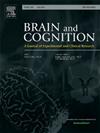The neural substrates of how model-based learning affects risk taking: Functional coupling between right cerebellum and left caudate
Abstract
Higher executive control capacity allows people to appropriately evaluate risk and avoid both excessive risk aversion and excessive risk-taking. The neural mechanisms underlying this relationship between executive function and risk taking are still unknown. We used voxel-based morphometry (VBM) analysis combined with resting-state functional connectivity (rs-FC) to evaluate how one component of executive function, model-based learning, relates to risk taking. We measured individuals’ use of the model-based learning system with the two-step task, and risk taking with the Balloon Analogue Risk Task. Behavioral results indicated that risk taking was positively correlated with the model-based weighting parameter ω. The VBM results showed a positive association between model-based learning and gray matter volume in the right cerebellum (RCere) and left inferior parietal lobule (LIPL). Functional connectivity results suggested that the coupling between RCere and the left caudate (LCAU) was correlated with both model-based learning and risk taking. Mediation analysis indicated that RCere-LCAU functional connectivity completely mediated the effect of model-based learning on risk taking. These results indicate that learners who favor model-based strategies also engage in more appropriate risky behaviors through interactions between reward-based learning, error-based learning and executive control subserved by a caudate, cerebellar and parietal network.

 求助内容:
求助内容: 应助结果提醒方式:
应助结果提醒方式:


